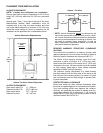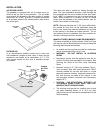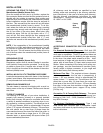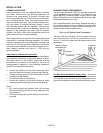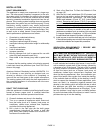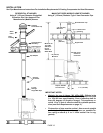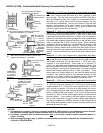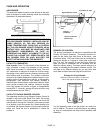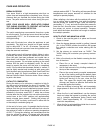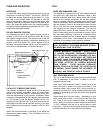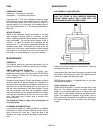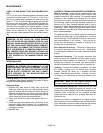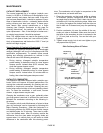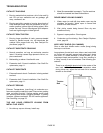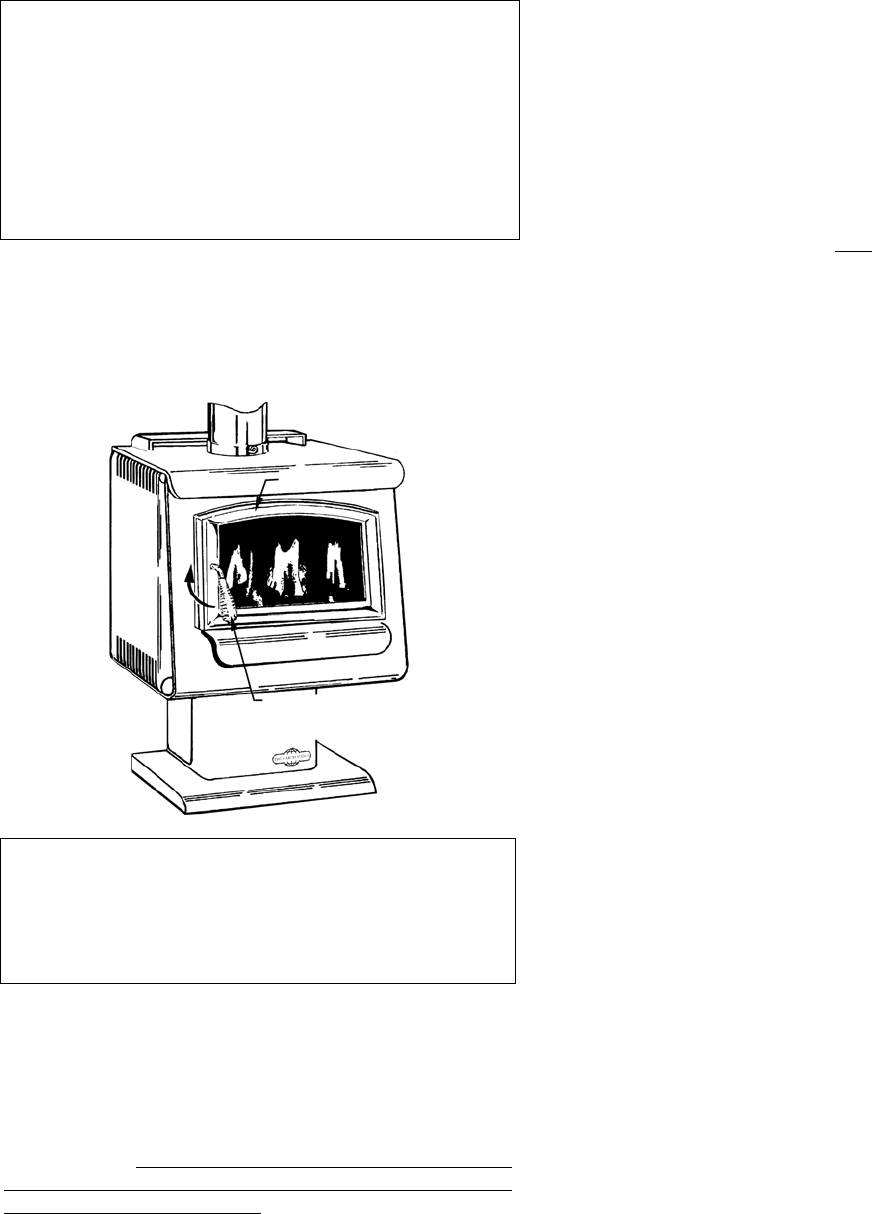
CARE AND OPERATION
PAGE 15
FUEL DOOR
The gold or black door option is purchased separately,
but is required. Install the door per instructions provided
in kit (see page 28 for ordering information).
WARNING: DO NOT OPERATE THIS STOVE WITHOUT
THE DOOR PROPERLY INSTALLED AND SECURED
AS THIS WILL PRODUCE EXTREME TEMPERATURES
(OVERFIRING). THE DOOR AND GLASS GASKETS
PROVIDE IMPORTANT SEALS, AND MUST BE MAIN-
TAINED (SEE MAINTENANCE REQUIREMENTS ON
PAGE 19). OVERFIRING CAN RESULT IN DAMAGE TO
THE APPLIANCE OR A HOUSE FIRE. OPERATION
WITH THE DOOR OFF OR OPEN NULLIFIES THE
SAFETY LISTING AND VOIDS THE WARRANTY.
Door Operation: The door handle assembly opens and
securely latches the fuel door closed. To open the door,
rotate the coil handle to the 9:00 position until door re-
leases. To close and latch, hold the coil handle in the 9:00
position, close the door, then rotate the handle to the 6:00
position. See illustration below.
CAUTION: WHEN OPENING THE DOOR, DO NOT EX-
TEND IT BEYOND ITS NORMAL TRAVEL. OVEREX-
TENDING THE DOOR TO A FURTHER OPEN POSITION
CAN PUT EXCESSIVE STRESS ON HINGE AREA OF
DOOR AND HINGE PINS AND MAY RESULT IN BREAK-
AGE.
Gold Doors: Gold doors are plated with 24-karat indus-
trial grade gold and will require curing to harden the gold.
Once it is cured it will never tarnish. Prior to burning this
appliance the doorframe should be cleaned thoroughly
with a good window cleaning solution and a soft cloth.
Do not use any metal polishes or abrasives to clean the
gold surface. Any oils or fingerprints left on the gold
could become permanent blemishes if the stove is
burned prior to their removal. After the first few fires, the
gold will cure. The ¾” (19 mm) door rope gasket is
made of highly durable high temperature resistant mate-
rial. It must be kept in good condition. Do not leave the
stove burning with the door ajar or open. Leaving the
door ajar or open while the stove is burning will cause
excessive heat build up in the stove (overfiring) and
could ignite surrounding combustibles as well as damage
the stove (such damage is not covered by the manufac-
turers warranty).
GLASS
The Glass is a super heat resistant ceramic that with-
stands continuous temperatures up to 1390° F. This tem-
perature is well beyond the temperatures in which you
operate your stove. If the glass ever becomes damaged
in any way, replace it, using only
5 mm ceramic glass
(part # G2000-7).
This appliance is designed to provide a flow of air over
the inside of the glass, which along with high heat helps
keep it clean. When operating the stove on low for ex-
tended periods of time, the glass may get dirty. A short,
hot fire (15 - 20 minutes) will help clean off much of the
normal buildup (see Troubleshooting, pages 21-23). A
commercial glass cleaner designed for stoves is recom-
mended for cleaning.
The glass should be cleaned thoroughly with glass
cleaner and a soft cloth BEFORE the stove is burned.
USE CONTROL SETTINGS THAT WORK FOR YOU
The fuel, the amount of heat you want, the type of instal-
lation you have and how long you wish the fire to burn
are all variables that will affect the control settings. The
same control settings in a variety of installations will pro-
duce different results.
Familiarize yourself with your stove by trying different
settings so you can learn how much heat to expect and
how long the fire will burn. It may take a week or two to
learn, but your patience will be rewarded by the warmth
and pleasant satisfaction that only a wood fire can pro-
vide.
To Open, Rotate Handle 90
Degrees Clockwise
Fuel Door



